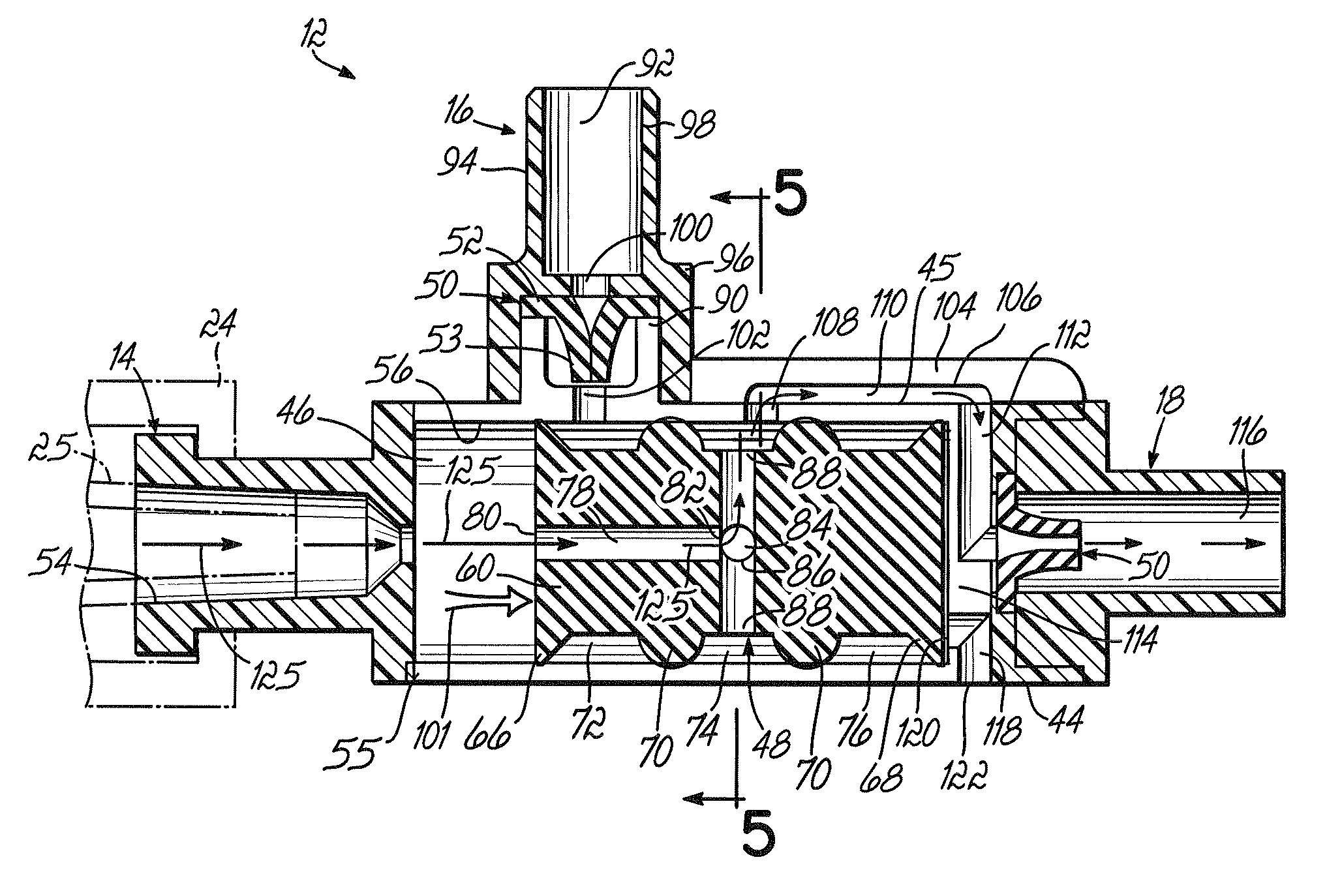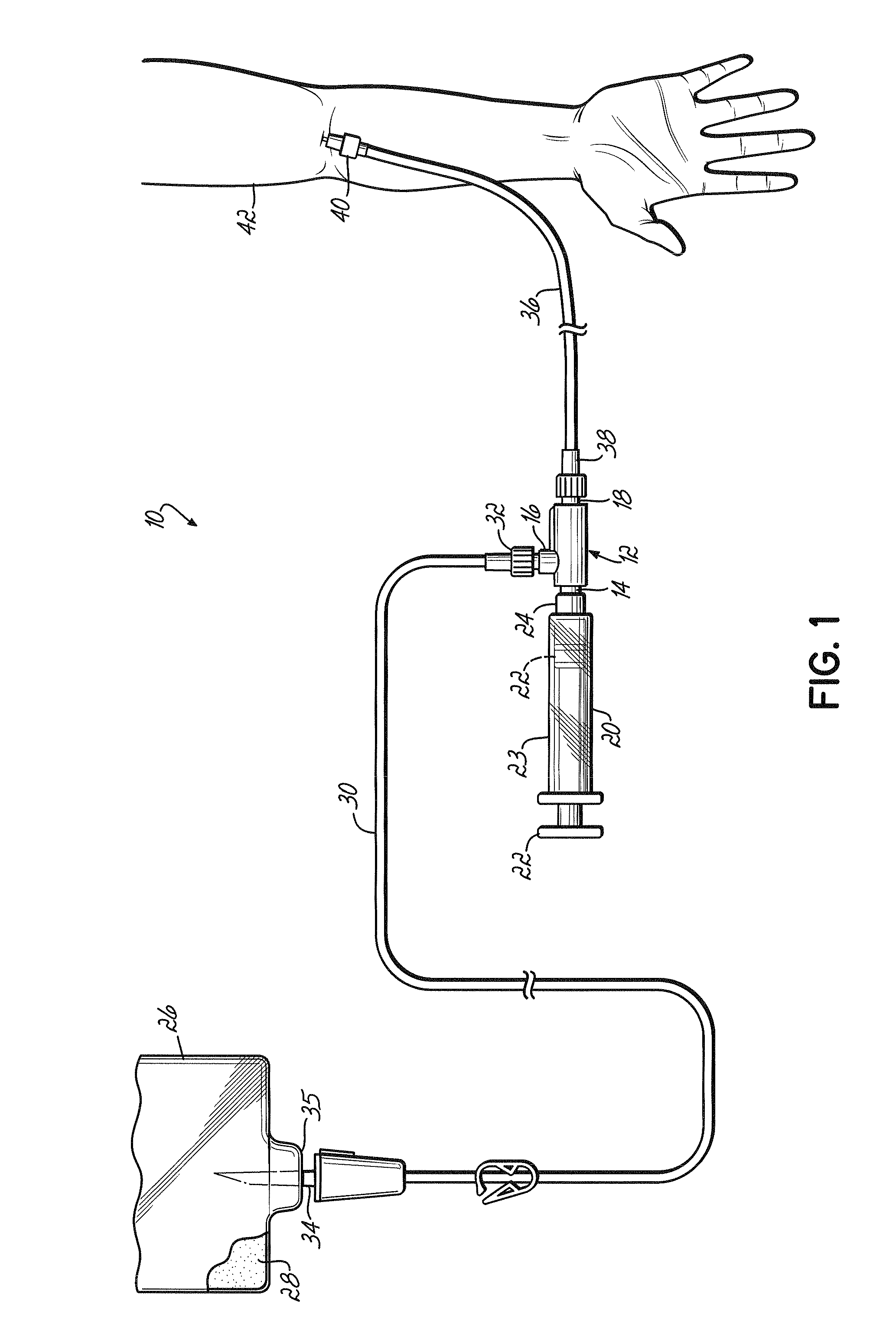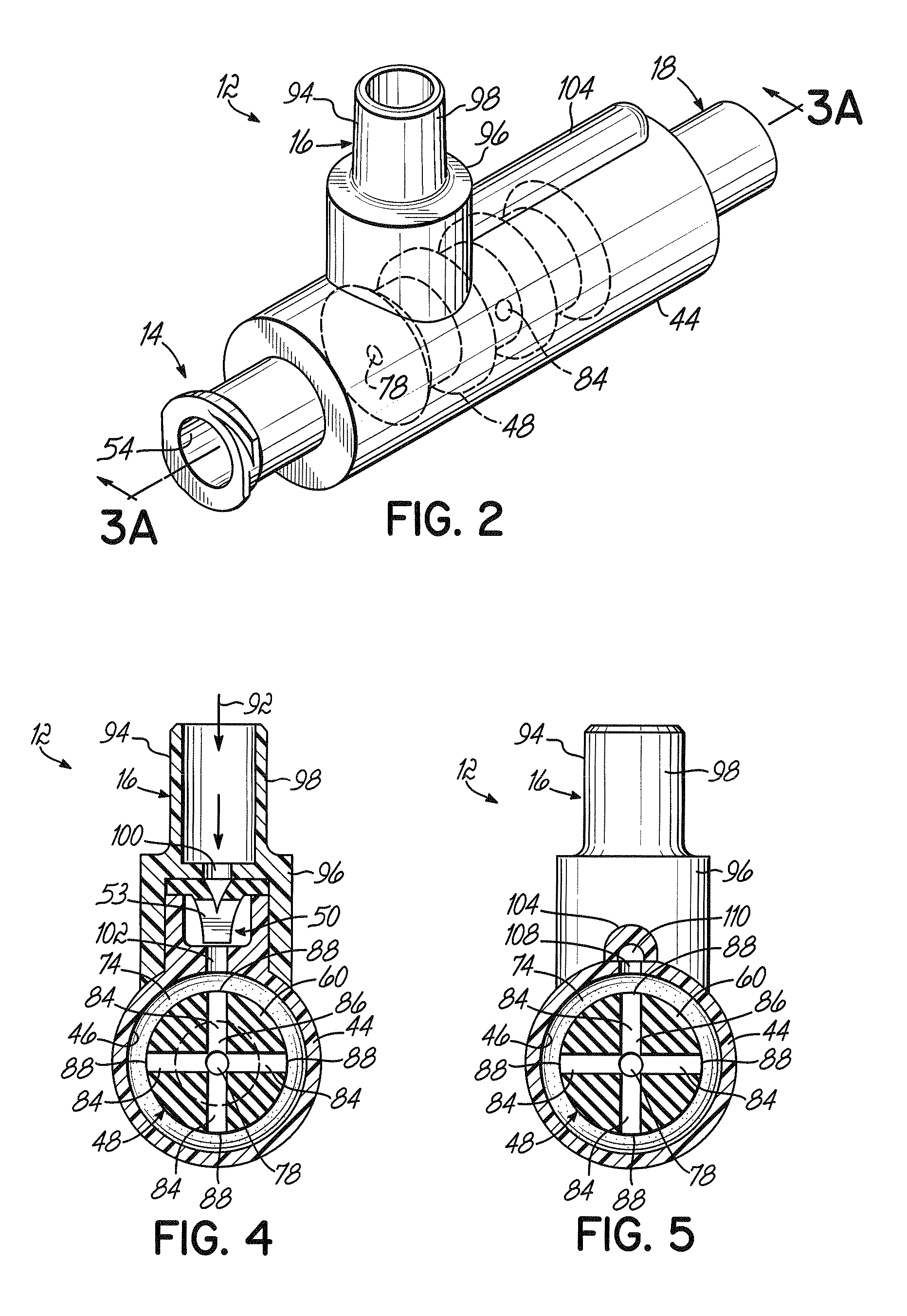Shuttle valve
a valve and valve port technology, applied in the field of valves, can solve the problems of caregiver error risk, inconvenient process and time-consuming, caregiver error, etc., and achieve the effect of preventing the caregiver from slipping and sliding, and preventing the caregiver from sliding and sliding
- Summary
- Abstract
- Description
- Claims
- Application Information
AI Technical Summary
Benefits of technology
Problems solved by technology
Method used
Image
Examples
first embodiment
[0022]Referring now the drawings, FIG. 1 illustrates a system 10 for dispensing medical fluids intravenously to a patient, with system 10 incorporating a shuttle valve 12 according to the present invention. The shuttle valve 12 includes a common port 14, an inlet port 16 and an outlet port 18. The fluid dispensing system 10 further includes a syringe 20 coupled to the common port 14. The syringe 20 includes a plunger 22 translatable within a barrel 23 integral at the outlet end with a collar 24 coupled to the common port 14 as subsequently discussed in greater detail.
[0023]System 10 further includes a source of fluid to be dispensed which can comprise a bag 26, commonly referred to as an IV bag, containing a fluid 28 therein. The fluid 28 can comprise a variety of medications and can also include other fluids, such as saline solution, as is known in the art. The system 10 further includes a first section of tubing 30 that can comprise a single piece of tubing or multiple pieces of i...
second embodiment
[0041]FIGS. 6A, 6B and 7 illustrate a shuttle valve 150 according to the present invention. Shuttle valve 150 includes a body 152 defining an interior chamber 154, and also includes a common port 156, an inlet port 158 and an outlet port 160. Each of the ports 156, 158 and 160 are coupled to body 152. Shuttle valve 150 further includes a shuttle 162 translatably disposed within the chamber 154 between a first position shown in FIG. 6A, where the inlet port 158 and the common port 156 are fluidicly coupled and the common port 156 and the outlet port 160 are fluidicly uncoupled, and a second position shown in FIG. 6B, where the outlet port 160 and the common port 156 are fluidicly coupled and the common port 156 and the inlet port 158 are fluidicly uncoupled. The inlet port 158 and the outlet port 160 are fluidicly uncoupled in both positions of shuttle 162.
[0042]The shuttle valve 150 further includes a pair of the check valves 50 discussed previously with respect to shuttle valve 12....
third embodiment
[0051]FIGS. 8A and 8B illustrate a shuttle valve 230 according to the present invention. Shuttle valve 230 includes a body 232 defining an interior chamber 234, and also includes a common port 236, an inlet port 238 and an outlet port 240. Each of the ports 236, 238 and 240 is coupled to body 232. The shuttle valve 230 further includes a shuttle 242 translatably disposed within the chamber 234 between a first position shown in FIG. 8A, wherein the inlet port 238 and the common port 236 are fluidicly coupled and the common port 236 and the outlet port 240 are fluidicly uncoupled, and a second position shown in FIG. 8B, wherein the outlet port 240 and the common port 236 are fluidicly coupled and the common port 236 and the inlet port 238 are fluidicly uncoupled.
[0052]Shuttle valve 230 also includes a pair of the check valves 50 discussed with respect to previous embodiments of the present invention. A first one of the check valves 50 is coupled to the inlet port 238 in a manner to pe...
PUM
 Login to View More
Login to View More Abstract
Description
Claims
Application Information
 Login to View More
Login to View More - R&D
- Intellectual Property
- Life Sciences
- Materials
- Tech Scout
- Unparalleled Data Quality
- Higher Quality Content
- 60% Fewer Hallucinations
Browse by: Latest US Patents, China's latest patents, Technical Efficacy Thesaurus, Application Domain, Technology Topic, Popular Technical Reports.
© 2025 PatSnap. All rights reserved.Legal|Privacy policy|Modern Slavery Act Transparency Statement|Sitemap|About US| Contact US: help@patsnap.com



